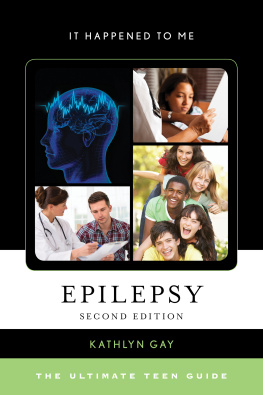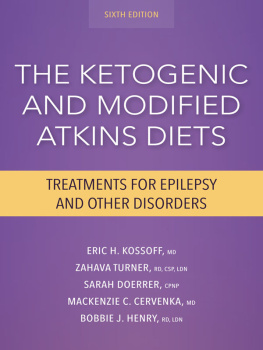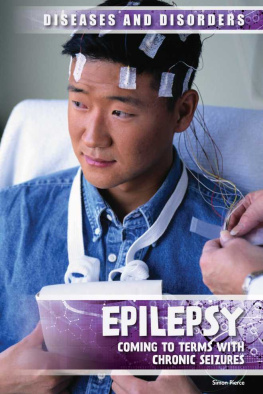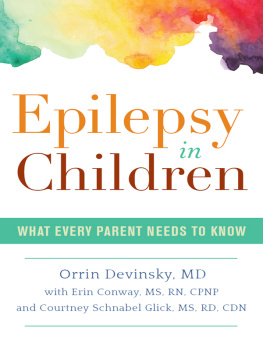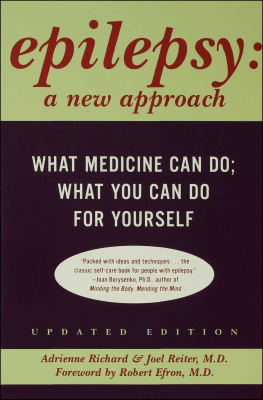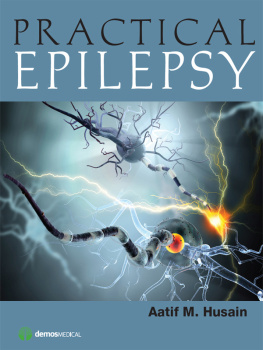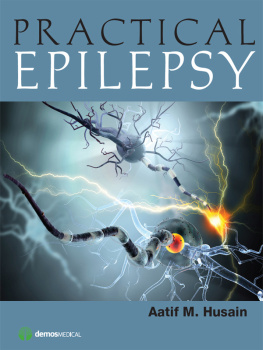Contents
Guide
Seizures AND Epilepsy IN Children
A JOHNS HOPKINS PRESS HEALTH BOOK
Seizures AND Epilepsy IN Children
A COMPREHENSIVE GUIDE
4TH EDITION
Eileen P. G. Vining, MD Sarah C. Doerrer, MS, CPNP
Christa W. Habela, MD, PhD Adam L. Hartman, MD
Sarah A. Kelley, MD Eric H. Kossoff, MD Cynthia F. Salorio, PhD
Samata Singhi, MD, MSc Carl E. Stafstrom, MD, PhD

JOHNS HOPKINS UNIVERSITY PRESS
BALTIMORE
Note to the Reader: This book is not meant to substitute for medical care, and treatment should not be based solely on its contents. Instead, treatment must be developed in a dialogue between the individual and their physician. Our book has been written to help with that dialogue.
Drug dosage: The author and publisher have made reasonable efforts to determine that the selection of drugs discussed in this text conform to the practices of the general medical community. The medications described do not necessarily have specific approval by the US Food and Drug Administration for use in the diseases for which they are recommended. In view of ongoing research, changes in governmental regulation, and the constant flow of information relating to drug therapy and drug reactions, the reader is urged to check the package insert of each drug for any change in indications and dosage and for warnings and precautions. This is particularly important when the recommended agent is a new and/or infrequently used drug.
1990, 1997, 2002, 2023 Johns Hopkins University Press
All rights reserved. Published 2023
Printed in the United States of America on acid-free paper
2 4 6 8 9 7 5 3 1
Johns Hopkins University Press
2715 North Charles Street
Baltimore, Maryland 21218
www.press.jhu.edu
is by Keith Weller, The Johns Hopkins Hospital.
Special discounts are available for bulk purchases of this book.
For more information, please contact Special Sales at .
The last printed page of the book is a continuation of this copyright page.
Seizures AND Epilepsy IN Children
Introduction
Many families whose children have had a single seizure, and many others whose children have epilepsy, come to us for a second opinion. There are common themes among all these families. One theme is that the family and child are focused on the seizure or seizures; they are unable to look at the whole child and the bigger picture. Their life and their childs life have become centered primarily on the seizures. A second theme is that the families and children are overwhelmed by the mythology of epilepsy, by the fear of future disability or intellectual disability. Few families understand what seizures are and what they are not. They come seeking to understand what has happened and what is likely to happen.
Many physicians, even those very knowledgeable about seizures, epilepsy, and their treatment, focus on these medical aspects and do not put epilepsy in the proper perspective of the whole child and family. We believe that no childs life should be defined by seizures. No one is an epileptic. The seizures and epilepsy are often only a small portion of the childs life. We believe that to put them in perspective you must understand the brain, seizures, and how to cope with epilepsy. You must understand the mythology and how different it often is from reality. Only with this understanding can you avoid unnecessarily disabling your child, prevent them being limited by others, and allow them to reach their full potential. That is why we have written this book and why we continue to revise it. While primarily for parents, it is also a book for everyone with seizures and for all who are touched by seizuresfamilies, teachers, and health professionals.
We hope this book will reassure you that a majority of children who have epilepsy can have their seizures completely controlled with medication and can function well in school and in their future lives. Many of these children will, after a time, stop taking medicine and will have outgrown their epilepsy. For some parents whose childrens epilepsy has not been completely controlled or whose children have atypical development or disabling conditions, we hope our book will help you and them to function as normally as possible and to maximize their assets and minimize their disabilities.
Parents come to us with many fears: Will my child be all right? Will he swallow his tongue? Will she die? Does she have a brain tumor? Will he be intellectually disabled? Can he ever lead a normal life? Can seizures ever be controlled? Can I ever leave her alone? Will medication make him an addict? All these thoughts, and more, run through the mind of a parent whose child has had a seizure. The children themselves have similar fears: Is this going to happen again? What will my friends think? Will I ever be able to ride my bike again? Can I go to college? Can I ever drive? Will I be able to get married? What about having children?
Before we can help you to deal with these fears and put epilepsy in perspective, we must debunk the mythology. Both terms, epilepsy and seizures, carry the myths and misconceptions of centuries past, when people who experienced them were thought to be possessed by witches or devils and were confined in special colonies or shunned. People saw a child suddenly seized, losing control, falling to the floor, his body jerking. A few minutes later this child was back to normal. What could have caused this to happen? It must have been some outside force! The devil? Not so long ago people believed this. We now know that seizures come from electrical disruptions in the brain.
Also part of the mythology, many people still believe that epilepsy and seizures are always devastating, that they will continue to recur, that they will get worse, that the brain will be damaged, and that their child might become disabled, intellectually limited, or even die. Now we know that only some children who have a single seizure have a second seizure. We also now know that most children who have had several seizures, who by definition have epilepsy, will still have their seizures controlled with medication, and that most children outgrow their seizures and can be taken off medication. Only a minority of children with epilepsy will have difficult-to-control seizures. Most children with seizures are quite normal all or virtually all the time, except during the seizure.
The folk tales persist because epilepsy remains a hidden condition. People see only the small percentage of children who are severely disabled and have seizures. The vast majority, whose seizures are well controlled and who function well, do not advertise that they have epilepsy. If your neighbors child has seizures and is doing well, you may never even know that the child has epilepsy. Only if they have a seizure when their friends are around do the friends become aware of the childs epilepsy. Their friends parents may say, I never knew they had epilepsy. They look so normal! I thought that all children with epilepsy were disabled. The only child I knew with seizures was in a wheelchair and never went to school. If we want to combat these old myths and prejudices, children with epilepsy and their families have to be far more comfortable and open about the disorder. Only then will the public understand that most people with epilepsy are just like themselves. Seeing only children with epilepsy who are disabled, you get the wrong impression. You may have no idea that most children who have epilepsy live almost normal and very productive and fulfilling lives. You can limit your child if you continue to believe the myths.


